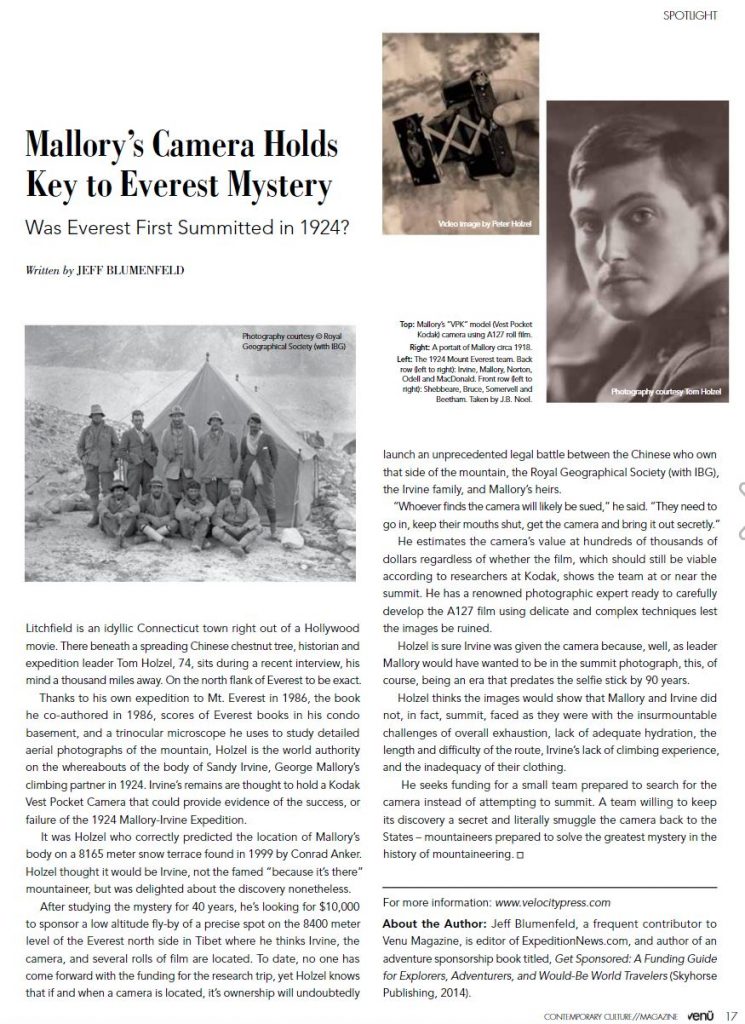The most sought-after camera ever lies deeply hidden on the highest mountain on earth. George Mallory and Andrew Irvine, lost on the first British Everest expedition in 1924, may have been the first to reach the summit. Another member of the expedition has been quoted as saying that he had loaned his Kodak VPK camera to Mallory as they passed each other on the north ridge. Mallory gave it to Irvine in order to reach the top first and be in the picture. There the story ends. 75 years later Mallory’ s body was found, but not yet Irvine’s who holds the camera with the biggest secret of all.

So much for the heroism surrounding the world’s first pocket camera. With the introduction of the camera in 1912, Kodak inspired Oscar Barnack for the later Leicas. This is already evident from the new inlay of the 127 film roll, which is slided/pushed on top into the back of the camera, just like with the Leicas. The VPK is one of the most popular Kodak cameras, affordable at the time and very popular with WWI soldiers who captured the Great War with the camera, much to the dismay and later a ban of the army.

The camera shown is a Vest Pocket Autographic Kodak from 1920. A few facts about the camera. Produced between 1912 and 1935 in many models, although the appearance has remained more or less characteristic. It was of the compact strut folding type and has the U.S.-speed 8 Rapid Rectilinear lens. These lenses were not fast, f / 7.7 to f / 32. The same goes for the shutter speeds, which run from 1 / 25s to 1 / 50s with B (ulb) and T (ime) in between. Not a camera for cloudy days, but that does not alter the fact that the VPK can produce beautiful photos on the 6.5×4 cm format of Kodak’s 127 film. This is still available.

Just slide out the primitive folding bed and you are good to go. The shutter does not have to be cocked. With a little patience by easily removing the front you can win a little light by removing the little ‘hold’ knob in the aperture ring so you can use the aperture wide open. This ‘special’ model also has Kodak’s Autotime, where the aperture is indicated with an explanatory text for the user which lighting conditions suit a particular F-stop.

The camera back had an area through which notes could be written onto the paper backing of a special “A127-” roll, the “autographic” feature – invented by Henry J. Gaisman. The note would be visible on the exposed negative. The small metal pen is attached to the back as a kind of ‘stylus’.

Kodak’s VPK is a historically significant camera. Photography has reached the masses with this first cheap pocket camera. The camera fits easily in your jacket. The metal appearance feels tough and sturdy, nothing leather, primal elements. As if you yourself go back in time to those turbulent black and white 1920s.





One Reply to “Eternal resting place: Kodak VPK”